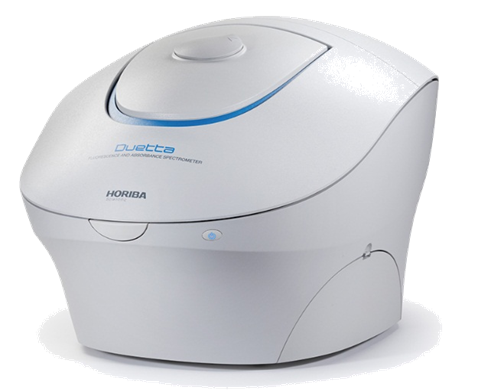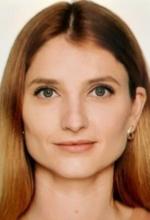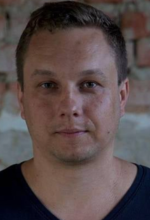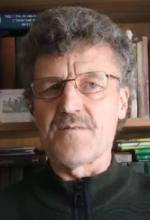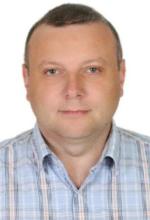Microscopy and instrumental methods in biology 07 2024

This course covers modern methods for visualizing, studying the structure and interactions of biological molecules. Its main goal is to tell students about the possibilities and limitations of each of the most popular methods and explain how to choose the simplest and most effective approach to answer a specific experimental question.
The course consists of several blocks, which will be taught by experts in their respective fields: Fluorescence spectroscopy (Vasyl Pyvovarenko, KNU); Fluorescence microscopy (Yuriy Kovalchuk, University of Tübingen; Petro Khoroshyy, IOCB Prague); Electron microscopy (Nina Bondarenko, Hanover Medical School/DNU); LC-MS and basics of proteomics (Oleg Lushchak, PNU/LMS London); other methods of structure determination (Volodymyr Shvadchak, PNU).
Practical work will cover the workflow of processing real experimental data sets from fluorescence and CD experiments, planning chromatographic experiments, in-depth work with fluorescence microscopy images using ImageJ.
The course consists of 26 lectures and 14 seminars/practical classes. Lectures and seminars of this course will last one and a half hours each. For seminars, students will be divided into 2 groups.
All classes will be given in Ukrainian.
Light absorption. Color. Spectrophotometers. Absorption-based methods. Dipole moment of molecules and absorption wavelength.
Principles of fluorescence. Jablonsky diagram. Fluorescence quantum yield. Fluorophores. Tryptophan and other natural fluorophores. Solvatochromism.
Polarized light. Fluorescence anisotropy. Stopped flow.
Transmission microscopy, phase contrast. Fluorescence microscopy. Principal schemes of microscopes. Lasers. Filters. Dichroic mirrors. Channels. Digital image collection. Image resolution, micrones and pixels.
Protein labeling. Cys-, Lys- reactive dyes. Intercalating dyes. FRET and its application to study protein interactions.
Confocal microscopy. Z-slices. FRET and detection of interactions in microscopy. Fluorescence lifetime and FLIM. Diffraction limit. Superresolution, STORM. PALM. Two-photon microscopy.
How to build or customize a microscope?
ImageJ/Fiji. Colocalization. TIRF.
Fluorescent proteins. Small molecule dyes. Channel crosstalk and selection of fluorophores. Membrane trackers, staining of nuclei. Photodegradation during measurements. FRAP. Light intensity and damage to cells. Caged molecules and controllable photorelease. Photoswithchable molecules.
CD spectroscopy to determine protein structure. IR spectroscopy.
Electrophoresis of proteins and oligonucleotides. Analytical ultracentrifugation. DLS. FCS. FCCS.
Spin. 13C and 15N protein labeling. NMR for protein structure analysis. Solid state NMR. MRI imaging. ESR and free radicals.
Protein crystallization. SAXS.
HPLC principle, preparative and analytical applications. Types of columns. Ion exchange chromatography. Size-exclusion.
Mass-spectrometry. LC-MS. ESI, MALDI and other ionization methods. Types of mass detectors. Fragmentation. LC-MS in proteomics.
What is that? Sample preparation.
Immunohistochemistry, flow cytometry, in situ hybridization. Western-blotting, ELISA, two-dimensional gel electrophoresis.
First-generation sequencing, second- or next-generation sequencing, third-generation sequencing. digital PCR, liquid biopsy).
Principle. Resolution. Modes. Sample preparation.
Principle and scheme of microscopes. XY and Z resolution. Sample preparation. Scanning speed and sample damage. Application for protein unfolding.
HTS methods and assay development.
Protein-membrane binding followed by Trp fluorescence. Origin software for non-linear fitting.
- Peter Jomo Walla Modern Biophysical Chemistry Detection and Analysis of Biomolecules, Wiley-VCH 2014 // розділи 1,2
- Пивоваренко В.Г. Абсорбційна та флуоресцентна спектроскопія органічних сполук; К.: ВПЦ «Київський університет», 2023 (препрінт викладений автором на ФБ)
- Каталог спектрів поглинання та флуоресценції барвників
- Lakowicz Principles of fluorescence spectroscopy
- Demchenko Introduction to Fluorescence Sensing https://doi.org/10.1007/978-3-030-60155-3
- Завантаження безкоштовної програми для обробки зображень Fiji https://fiji.sc/ (це практично стандарт в флуоресцентній мфікроскопії)
- Peter Bankhead. Analyzing fluorescence microscopy images with ImageJ, 2014 (підручник по роботі в Fiji/ImageJ)
- https://www.ibiology.org/techniques/bioimage-analysis/ (лекції по обробці зображень)
- https://www.ibiology.org/online-biology-courses/microscopy-series/fluorescence-microscopy/
- https://www.microscopyu.com/techniques/confocal
- https://www.olympus-lifescience.com/en/resources/
- Tam, J. and Merino, D. (2015), Stochastic optical reconstruction microscopy (STORM) in comparison with stimulated emission depletion (STED) and other imaging methods. J. Neurochem., 135: 643-658. https://doi.org/10.1111/jnc.13257
- Schermelleh, L., Ferrand, A., Huser, T. et al. Super-resolution microscopy demystified. Nat Cell Biol 21, 72–84 (2019). https://doi.org/10.1038/s41556-018-0251-8

